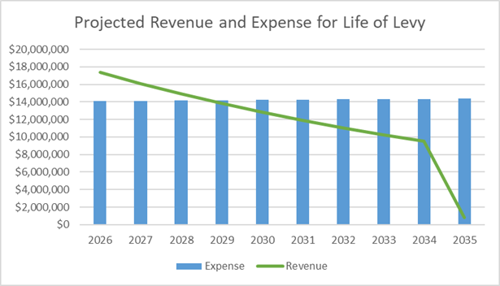Want to learn more about CAC? The FAQs and fact sheets below are designed to help provide concise facts about Cuyahoga Arts & Culture, our grantmaking, Board, tax resource and impact in the community. Still have questions? Contact us.
General
CAC focuses on creating a vibrant community of nonprofit arts and culture organizations in Cuyahoga County. We focus on supporting the nonprofit arts and culture community as a whole, rather than limiting our support to a small number of select organizations. We do this by providing equitable grant distributions that give arts and culture organizations of all sizes access to consistent funding.
We define arts and culture broadly to include nature, science, history, and more. So, while you’ll see the bulk of our grants go to nonprofits that specifically focus on the arts, you’ll also see us support organizations that tie artistic and cultural experiences to the natural world or incorporate arts and culture into broader educational activities.
In 2026, CAC will invest $12.9 million in more than 300 arts and culture organizations across Cuyahoga County. Since 2007, CAC has invested more than $257 million through 4,000+ grants to nearly 500 arts and culture organizations.
Funding and Grants
We provide two-year, unrestricted general operating support commitments to organizations with a core mission of arts and culture and that have successfully completed two CAC grants. The size of general operating support grants is determined by our funding formula. (See below)
We provide support for specific projects for organizations that are new grantees to CAC and/or that incorporate arts and culture programming into a broader focus area, such as education.
Organizations with a core mission of arts and culture that have successfully completed two CAC grants may apply for either general operating support or project support.
CAC also provides annual programmatic funding to two other arts support organizations: Assembly for the Arts and Neighborhood Connections.
Our board has set a total grant allocation amount of $12.9 million for 2026 to be distributed to more than 300 organizations.
CAC’s revenue comes from a tax on cigarette sales in Cuyahoga County. In 2024, residents approved an increased tax levy of 70 cents per pack. For 2025, we estimate that revenue from tax collections will total approximately $18 million.
Although the tax levy is higher, sales of cigarettes have been in decline since CAC was created in 2007 and that trend will continue. That means CAC’s revenue will continue to decline as well. Commonsense projections show a decrease of roughly $1 million per year over the next decade.
In order to achieve our goal of providing consistent funding for our nonprofit arts and culture community, CAC’s board has chosen to remain prudent stewards by maintaining some current revenue in its general fund now in order to provide consistent grant funds in future years.

Yes. As a governmental body, CAC is allowed to accept private donations, but those donations will not qualify for a typical tax deduction for those who donate. CAC is allowed to accept other sources of public funding, but it cannot lobby on its own behalf for that funding. We work to educate potential funders about the importance of the arts and collaborate with other organizations that are allowed to advocate directly to increase arts funding.
CAC’s grant funding for general operating support is determined by a complex mathematical formula that has been refined over several years to provide an objective, fair and balanced approach to grant decisions.
- Grant distributions are influenced by a number of factors in this formula, including the number of grantees, the size of individual organization budgets, the overall budget dollars of all organizations combined, the amount of funding CAC has available in a given year, and more. How these factors come together determines the amount of individual grants from year to year.
- Think of the funding formula like a 300-piece orchestra. The sound the orchestra produces is influenced by many factors, such as the volume of each instrument, the tone it produces, the skill of the musician, and the piece the orchestra will play. How these factors come together determines what an audience will hear from performance to performance.
The funding formula also includes some guardrails to help ensure that grant distributions are fair and equitable. For example, no organization can receive more than $1 million in a single grant. In addition, our funds generally can provide no more than 10% of an organization’s total budget, and much less than that (less than 1%) as organizations’ budget sizes increase.
Every arts and culture organization needs multiple sources of revenue, and CAC will never have the capacity to be the sole or a leading source of funding for any organization.
Individual organization’s grants will likely vary from year to year, depending on changes in the factors in the funding formula (see above). For example, changes in the size of your budget or the budgets of other organizations will shift the distribution of grant amounts across all organizations. So will changes in the number of grantees or the amount of money CAC has to make grants each year. General Operating Support grants are two-year commitments, so 2026 GOS grantees can expect to be recommended for a level grant in 2027. Given CAC’s commitment to providing consistent funding through 2035, we will do everything in our power to prevent significant shifts in funding amounts for our grantees.
CAC is focused on building a thriving community of nonprofit arts and culture organizations. We are legally authorized to provide grants to nonprofit arts and culture organizations. We cannot make grants to individuals, including individual artists. We cannot make grants to K-12 schools, other units/agencies of government, private foundations, national or state service organizations, and more. For more information on eligibility, visit our 2026 Guidelines.
Other
CAC and Assembly for the Arts are separate and distinct organizations.
Assembly for the Arts is a 501(c)3 nonprofit organization with its own board and leadership and operates its own programs. Assembly for the Arts is a CAC grantee, and uses grant funding it receives from CAC to help fund its own programming for individual artists. Learn more about Assembly for the Arts.
Neighborhood Connections is an independent nonprofit community-building program that empowers people in Cleveland’s neighborhoods and encourages them to become more engaged with each other and the city around them. Neighborhood Connections invests in citizen-led neighborhood projects through its innovative small grants program that offers residents of Cleveland and East Cleveland grants of up to $5,000. Neighborhood Connections has used grants from CAC to fund over 100 programs in Cleveland and East Cleveland since 2013. Learn more about Neighborhood Connections.
Fact Sheets
Understanding Grant Amounts and How They Are Calculated - an overview of CAC grant calculations
CAC At a Glance - a brief overview of CAC's mission, grantmaking, and structure.
Issue 55: What's Next? - next steps following the passage of Issue 55.
CAC Video Guides - video overviews and walkthroughs for applicants and grant recipients
